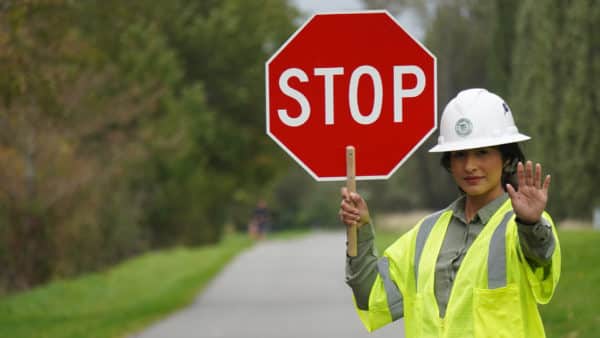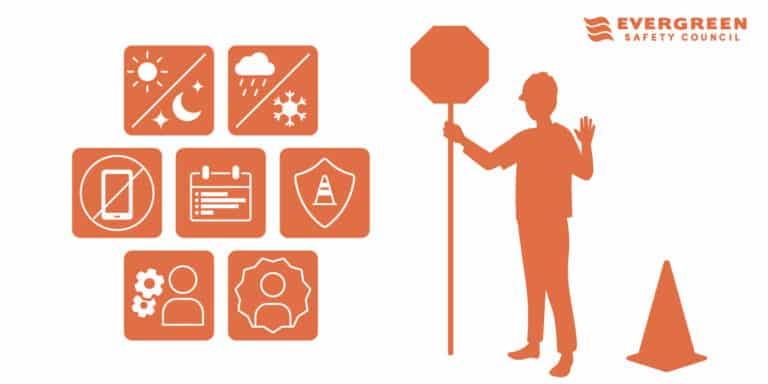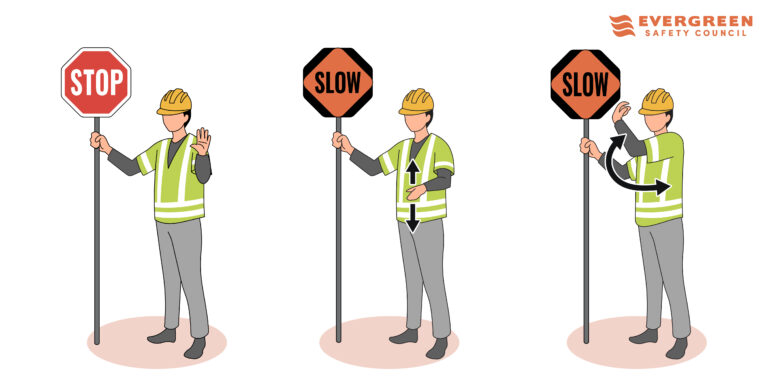Flagger certification
Flaggers help to ensure the safety of both workers and road users by directing traffic in work zones. Earn your Washington State flagger certification in one of our in-person classes, or if you are in Connecticut or other MUTCD state, you may take our self-directed online course.
About our Flagger program
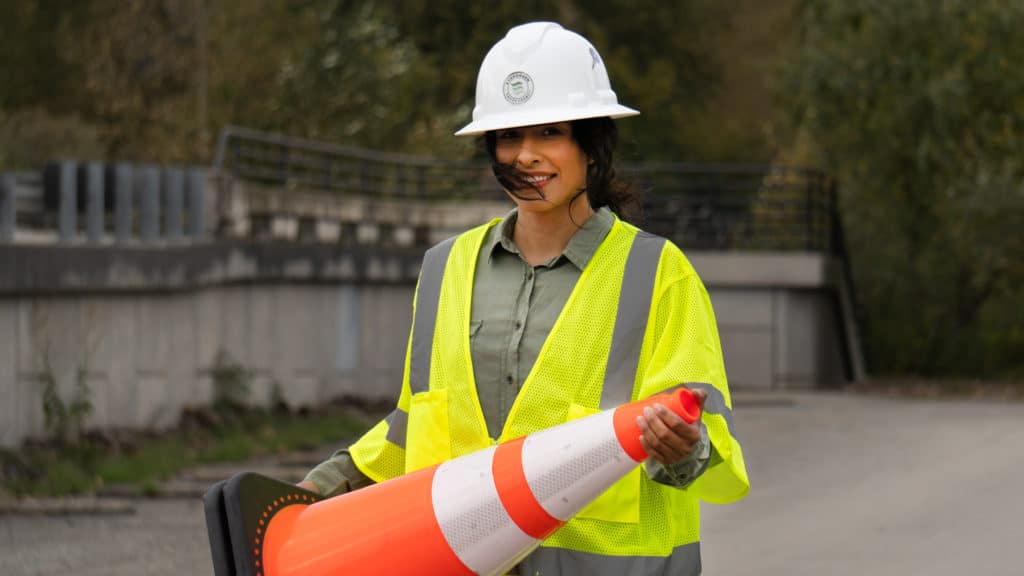
Roadside flaggers keep work zones safe
Roadside flaggers warn and direct motorists when construction or repair work takes place in an area where the roadway cannot be shut down. Their presence alerts drivers to upcoming changes in the traffic pattern, hazards, and the presence of other roadside workers.
The first step to a new career is certification
The construction industry is growing, and with it the need for qualified, certified workers. Evergreen Safety Council’s Flagger Instructor Certification is an 8-hour course approved by the Washington State Department of Transportation. Upon completion of the class and successfully passing a final exam, students will receive their flagger certification card.
Flagger articles in our safety library
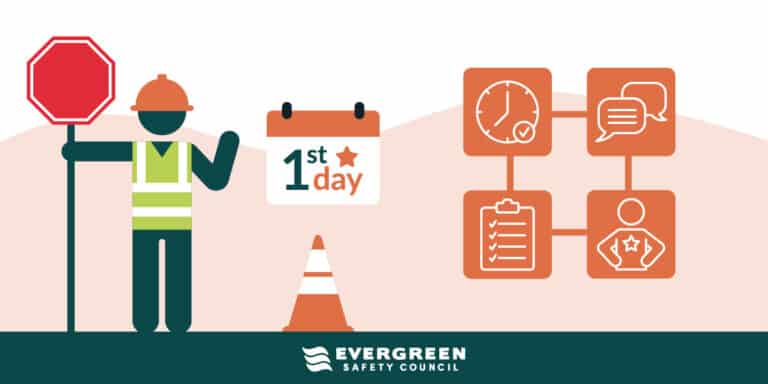
Flagger
How to navigate your first day on the job as a flagger
Getting your certification is only your first step to working as a flagger. Once you’ve been hired for a job, the next step is to mentally and physically prepare for your first day. Just like any new job, it’s normal to feel nervous, but there is plenty you can do to help yourself feel calm and confident.
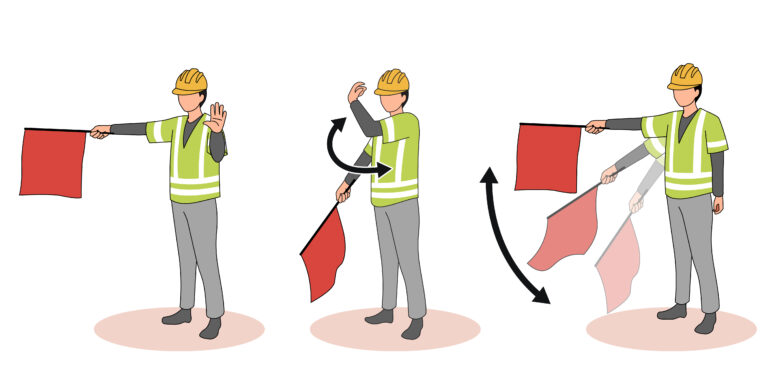
Flagger
Flagger signaling with a red flag
Flagging is a challenging and hazardous job that requires strong mental and physical abilities, and takes place in tough work environments. Wearing the right combination of hi-visibility apparel and workwear is one of the keys to keeping yourself safe in the work zone.
Flagger
Dress for success in the work zone
Flagging is a challenging and hazardous job that requires strong mental and physical abilities, and takes place in tough work environments. Wearing the right combination of hi-visibility apparel and workwear is one of the keys to keeping yourself safe in the work zone.

Flagger
Flagger clothing requirements for Washington State
The Washington Department of Transportation (WSDOT), the Manual on Uniform Traffic Control Devices (MUTCD), and the Washington State Department of Labor & Industries (L&I) all require that workers who are on foot in a work zone and may be exposed to vehicles or equipment wear high-visibility apparel.

Flagger
Heatstroke Prevention, Symptoms and Treatment for Flaggers
Heat-related illnesses can occur at any time, but workers are especially at risk during the warmer summer months. Whether you work outside or indoors, it’s important to learn to recognize signs and symptoms of heat stroke, heat exhaustion, and other heat-related illnesses—especially when temperatures rise.
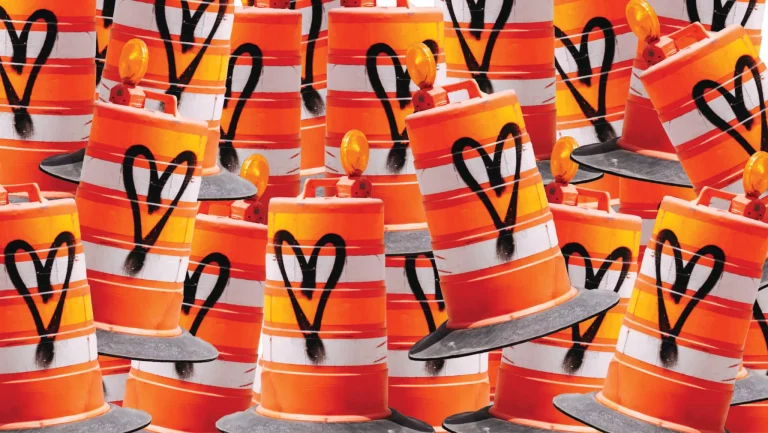
Flagger
National Work Zone Awareness Week - April 11-15, 2022
National Work Zone Awareness Week takes place each year during the beginning of “construction season” to remind road users to be mindful and use their best judgment when encountering work zones. The theme for this year’s event, hosted by the Michigan Department of Transportation, is “Drive Safe. Work Safe. Save Lives.”
